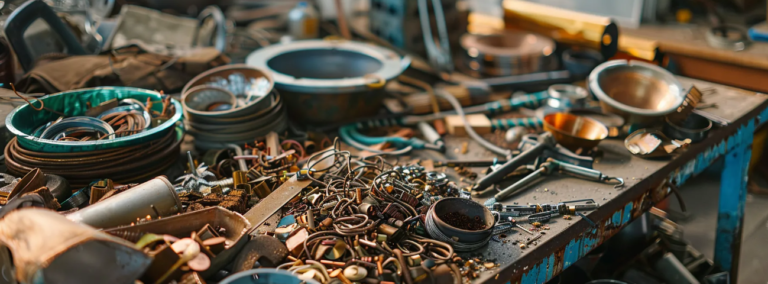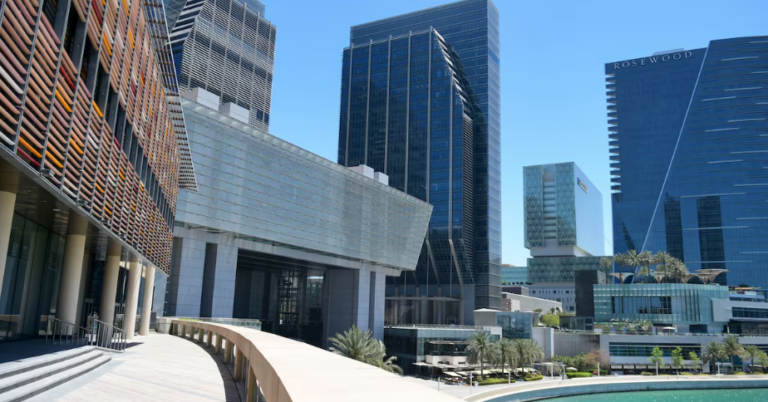Stamped Concrete Services: The Ultimate Guide to Style, Durability, and Value
What Are Stamped Concrete Services?
Stamped concrete services refer to the process of installing concrete surfaces that are patterned, textured, or embossed to resemble brick, slate, flagstone, tile, wood, and various other finishes. This decorative technique is widely used for driveways, patios, walkways, pool decks, and even interior floors, thanks to its ability to combine durability with a high-end look—often at a fraction of the cost of natural materials.
As homeowners, architects, and designers look for ways to enhance curb appeal without breaking the bank, stamped concrete services have emerged as a top-tier solution. If you’re considering upgrading your outdoor space or revamping your property’s surfaces, understanding the full scope of stamped concrete offerings is essential.
For expert installation and design inspiration, explore this trusted provider of stamped concrete services.
The Rise in Popularity of Stamped Concrete
Over the last few decades, stamped concrete has experienced a surge in popularity. Initially viewed as a purely functional material, concrete has undergone a transformation into a decorative medium. Thanks to advances in coloring techniques, stamping tools, and finishing processes, today’s stamped concrete can rival the beauty of high-end stone or brickwork.
The key reasons behind its growing appeal include:
- Affordability: Less expensive than natural stone or pavers.
- Durability: Can withstand weather, wear, and time.
- Versatility: Suited for residential and commercial properties.
- Customizability: Infinite design, pattern, and color options.
Benefits of Stamped Concrete Services
1. Aesthetic Flexibility
Stamped concrete offers homeowners and businesses an incredible range of visual options. Whether you want a cobblestone driveway, a slate-look patio, or a wood-plank styled walkway, concrete can replicate it.
Popular Designs Include:
- Ashlar Slate
- European Fan
- Herringbone Brick
- Seamless Stone
- Flagstone
- Weathered Wood Plank
Each pattern can be customized in terms of color, texture, and finish, making it possible to achieve a unique look that complements your property’s architecture and surroundings.
2. Durability and Long-Term Value
Stamped concrete is not only beautiful but also long-lasting. Properly installed and maintained, it can last 25–30 years or more. It resists cracking, fading, and wear from traffic or UV exposure. Unlike pavers, it doesn’t have joints that can shift or settle over time, reducing the risk of weed growth and uneven surfaces.
3. Cost-Effectiveness
Compared to natural stone, slate, brick, or tile, stamped concrete is significantly more cost-effective. It delivers the same visual impact for a fraction of the price, making it an attractive option for budget-conscious property owners.
4. Low Maintenance
Stamped concrete requires far less upkeep than other decorative materials. Regular sweeping and occasional pressure washing are typically enough. Every few years, a sealer should be reapplied to maintain its luster and protect against moisture, stains, and color fading.
Applications of Stamped Concrete
Stamped concrete services are incredibly versatile. They can be used across a wide range of residential and commercial projects.
Residential Applications
1. Driveways
A stamped concrete driveway offers the strength of concrete with the aesthetic of brick, cobblestone, or slate. It dramatically boosts curb appeal and can be customized to match your home’s design.
2. Patios
Whether you’re looking to create a modern lounge area or a rustic backyard retreat, stamped concrete patios offer limitless design possibilities that blend seamlessly with nature.
3. Walkways and Garden Paths
Elegant, durable, and weed-free, stamped concrete paths can mimic the look of natural stepping stones or pavers while maintaining a solid, uninterrupted surface.
4. Pool Decks
Safety and style are critical around pools. Stamped concrete provides a slip-resistant surface that stays cooler than plain concrete and enhances the area’s overall look.
See Also: How Technology Is Redefining the Customer Experience
Commercial Applications
1.Retail and Hospitality
Restaurants, hotels, and shopping centers often use stamped concrete to create inviting courtyards, outdoor dining areas, and walkways with high-end appeal.
2. Public Spaces
Parks, schools, plazas, and government buildings benefit from stamped concrete’s resilience and customizability, offering safe, attractive surfaces for high-traffic zones.
3. Showrooms and Interiors
Some businesses use stamped concrete indoors to create rustic, industrial, or sleek modern aesthetics with high durability for heavy equipment or foot traffic.
The Stamped Concrete Process
Understanding the step-by-step process helps set realistic expectations for homeowners and property managers.
1. Planning and Design
Begin by choosing a pattern and color scheme that suits your property. The design phase also includes determining the layout, dimensions, and integration with existing structures or landscapes.
2. Site Preparation
The area is excavated, graded, and compacted. A solid sub-base ensures proper drainage and prevents future cracking or settling.
3. Forming and Pouring
Forms are placed to contain the concrete. Reinforcements like rebar or mesh may be added. Concrete is then poured and leveled.
4. Coloring
Color is added either through integral color mixed into the concrete or by broadcasting color hardener onto the surface. Accent colors can be applied using release agents to create depth and contrast.
5. Stamping
Once the concrete has reached the right consistency, stamping mats are pressed into the surface to imprint the desired pattern. This step requires skilled timing and craftsmanship.
6. Curing and Sealing
After stamping, the surface must cure properly. Once fully cured, it is cleaned and sealed to enhance color and protect the surface from weather, traffic, and staining.
Customization Options
Color Choices
Stamped concrete offers an expansive palette. Earth tones, bold accents, multi-color blends—your options are vast. Using different coloring methods such as acid staining, dyes, and integral color allows full control over the final appearance.
Textures and Patterns
You can replicate nearly any material. Combine textures (e.g., cobblestone with border tiles) for a one-of-a-kind finish. Use custom stamps or engraving to incorporate logos, names, or designs.
Borders and Inlays
Add elegance with stamped or colored borders, medallions, or inlaid patterns. These features give your surface a high-end, professional finish.
Maintenance Tips for Stamped Concrete
While stamped concrete is low-maintenance, some care ensures its longevity and beauty.
Routine Cleaning
- Sweep regularly to prevent dirt accumulation.
- Rinse with a garden hose or light pressure washer.
- Use a mild soap or concrete cleaner for tough spots.
Sealing
- Apply a sealer every 2–4 years, depending on exposure and use.
- Sealing enhances color, adds shine, and protects from moisture, chemicals, and UV damage.
- Choose between matte, satin, or glossy sealers based on aesthetic preference.
Avoiding Damage
- Don’t use harsh de-icing chemicals; they can damage the sealer and surface.
- Avoid dragging heavy furniture or equipment across the surface.
- Promptly clean up oil, grease, or other stains to prevent long-term discoloration.
Environmental Benefits
Stamped concrete can be an environmentally friendly option when installed with sustainability in mind:
- Energy Efficiency: Reflective finishes can reduce heat absorption, lowering the surrounding temperature.
- Durability: Its long lifespan reduces the need for replacement materials.
- Local Sourcing: Concrete and aggregate are often locally sourced, reducing carbon emissions from transport.
- Fewer Raw Materials: Replicating stone or brick reduces the demand for quarrying or clay extraction.
Common Myths About Stamped Concrete
“It Looks Fake.”
When professionally done, stamped concrete can closely mimic real stone, tile, or wood. Advanced molds and coloring techniques have evolved dramatically.
“It Cracks Easily.”
All concrete can crack, but proper installation, joints, and sealing significantly reduce this risk. Stamped concrete, when reinforced and cured properly, is very resilient.
“It’s Slippery.”
When sealed with anti-slip additives, stamped concrete is safe even in wet conditions. It can also be textured to provide additional grip.
Choosing the Right Contractor
Not all stamped concrete services are equal. Consider these factors when hiring:
- Experience: Look for contractors with proven portfolios.
- References: Read reviews and request past project photos.
- Licensing and Insurance: Ensure compliance with local regulations.
- Warranties: A reliable contractor will stand behind their work.
- Communication: Clear timelines, transparent pricing, and responsive communication are signs of professionalism.
Conclusion
Stamped concrete services offer the perfect blend of form, function, and affordability. From driveways and patios to commercial plazas and pool decks, stamped concrete delivers exceptional value and striking aesthetics that can mimic natural materials without the high cost or upkeep.
With endless options for patterns, textures, and colors, you can achieve a one-of-a-kind design tailored to your property’s unique character. Whether you’re upgrading your home exterior or designing a commercial space, investing in quality stamped concrete is a decision that pays off in beauty, durability, and long-term satisfaction.
For tailored solutions and expert installation, explore the leading provider of stamped concrete services to bring your vision to life.






